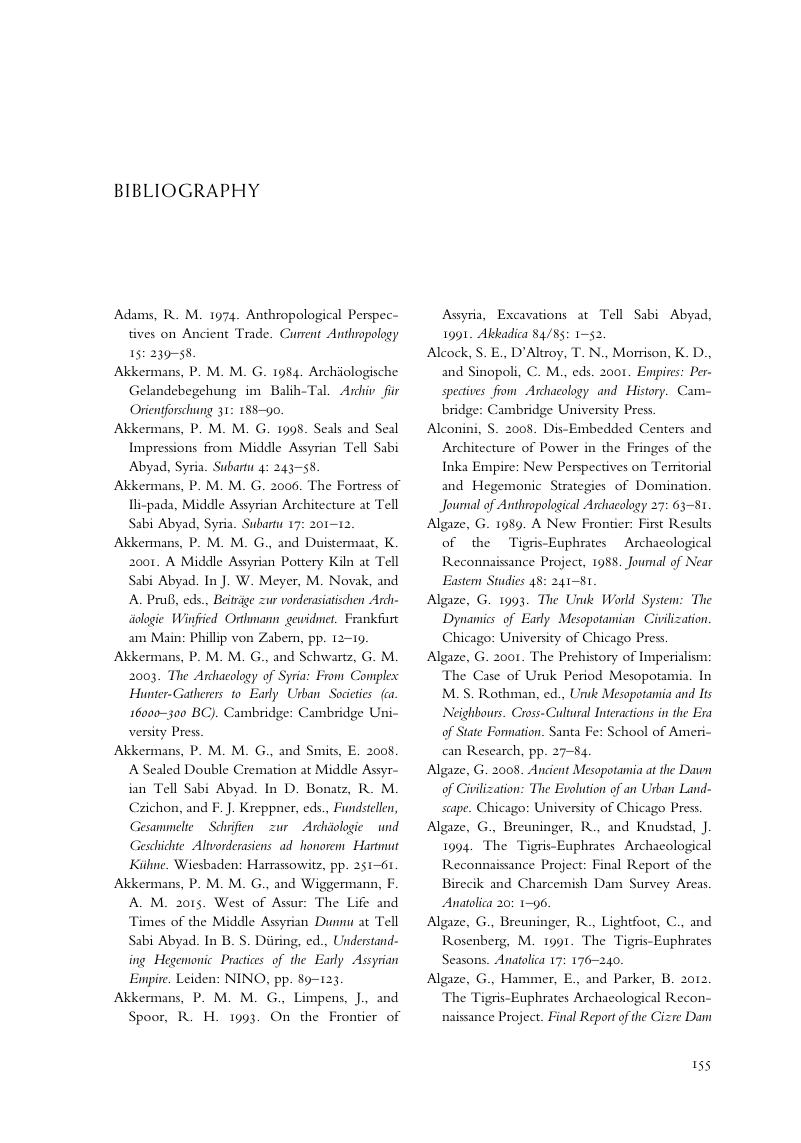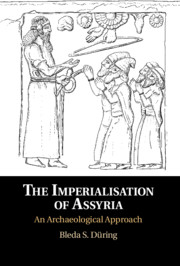Book contents
- The Imperialisation of Assyria
- The Imperialisation of Assyria
- Copyright page
- Dedication
- Contents
- Figures
- Tables
- Acknowledgements
- A Note on Chronology
- Introduction
- One A Fragmented World
- Two A City at the Fringe?
- Three The Rise of Assyria
- Four A Patchwork Empire
- Five Practising Empire
- Six Rulers of All the World
- Conclusions
- Bibliography
- Index
- References
Bibliography
Published online by Cambridge University Press: 24 January 2020
- The Imperialisation of Assyria
- The Imperialisation of Assyria
- Copyright page
- Dedication
- Contents
- Figures
- Tables
- Acknowledgements
- A Note on Chronology
- Introduction
- One A Fragmented World
- Two A City at the Fringe?
- Three The Rise of Assyria
- Four A Patchwork Empire
- Five Practising Empire
- Six Rulers of All the World
- Conclusions
- Bibliography
- Index
- References
Summary

- Type
- Chapter
- Information
- The Imperialisation of AssyriaAn Archaeological Approach, pp. 155 - 182Publisher: Cambridge University PressPrint publication year: 2020



